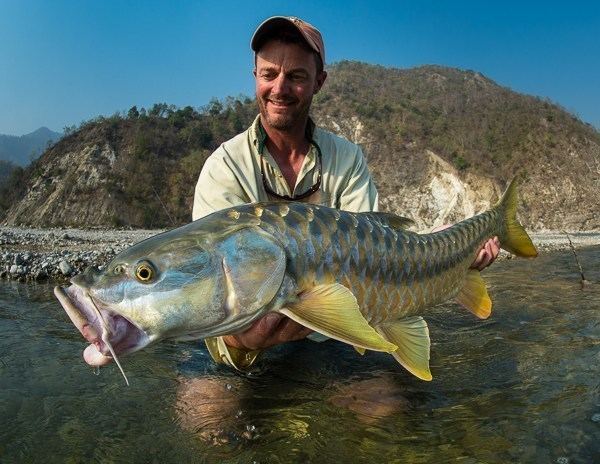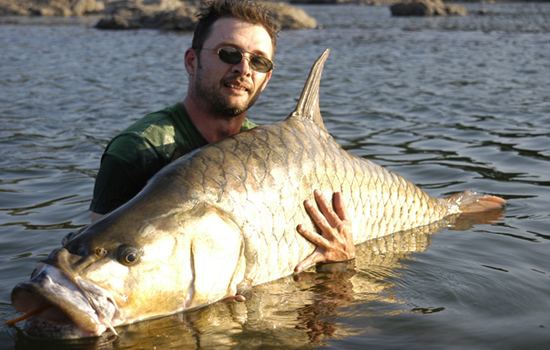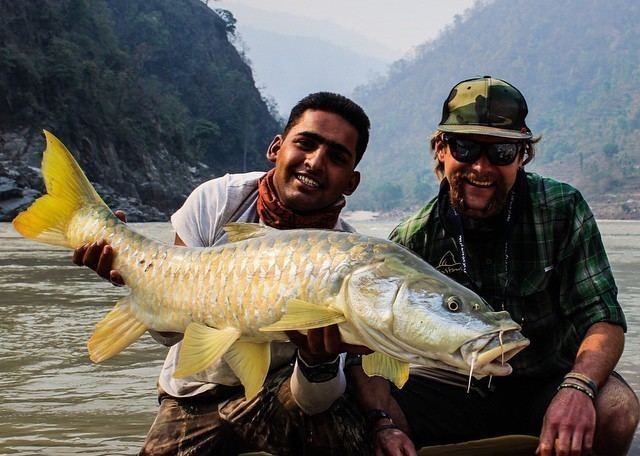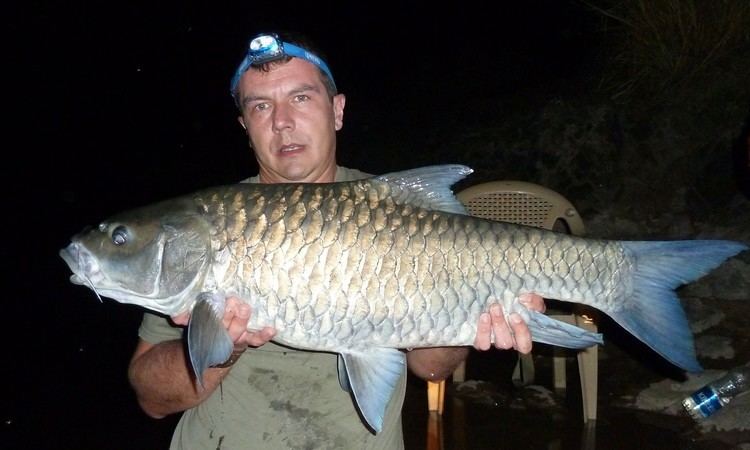Phylum Chordata Subfamily Cyprininae | ||
 | ||
Representative species | ||
5 minutes mahseer magic
Mahseer (Hindi: महाशीर or महासीर; Urdu: مہاشیر) is the common name used for the genera Tor, Neolissochilus, and Naziritor in the family Cyprinidae (carps). The name is, however, more often restricted to members of the genus Tor. The range of these fish is from Malaysia, Indonesia, and across southern Asia including the Indian Peninsula and Pakistan. They are commercially important game fish, as well as highly esteemed food fish. Mahseer fetch high market price, and are potential candidate Species for aquaculture. Several of the larger species have suffered severe declines, and are now considered threatened due to pollution, habitat loss, and overfishing.
Contents
- 5 minutes mahseer magic
- Nepal fishing before earthquake record golden mahseer 137cm rafting
- Etymology
- Species
- Genus Tor
- Genus Neolissochilus
- Genus Naziritor
- In heraldry
- Current problems in Himachal Pradesh
- References

The taxonomy of the mahseers is confusing due to the morphological variations they exhibit. In developing strategies for aquaculture and propagation assisted rehabilitation of mahseer species, resolution of taxonomic ambiguities is needed.

Mahseers inhabit both rivers and lakes, ascending to rapid streams with rocky bottoms for breeding. Like other types of carps, they are omnivorous, eating not only algae, crustaceans, insects, frogs, and other fish, but also fruits that fall from trees overhead.

The first species from this group were scientifically described by Francis Buchanan-Hamilton in 1822, and first mentioned as an angling challenge by the Oriental Sporting Magazine in 1833, soon becoming a favorite quarry of British anglers living in India. The golden mahseer is the largest member of the group and one of the largest cyprinids; it has been known to reach 2.75 m (9 ft 0 in) in length and 54 kg (119 lb) in weight, although specimens of this size are rarely seen nowadays. In addition to being caught for sport, mahseer are also part of commercial fishing and ornamental or aquarium fish.
Nepal fishing before earthquake record golden mahseer 137cm rafting
Etymology
The Hindi name of mahāsir, mahāser, or mahāsaulā is used for a number of fishes of the group. Several sources of the common name mahseer have been suggested: It has been said to be derived from Sanskrit, while others claim it is derived from Indo-Persian, mahi- fish and sher- tiger or "tiger among fish" in Persian. Alternatively, mahā-śalka, meaning large-scaled, is suggested, as the scales are so large that Francis Buchanan mentions that playing cards were made from them at Dacca. Another theory by Henry Sullivan Thomas suggests mahā-āsya: great mouth. The name mahasher is commonly used in Urdu, Punjabi, and Kashmiri languages in Pakistan for this fish and is said to be made up of two local words: maha = big and sher = lion, as it ascends in the hilly rivers and streams of Himalaya courageously. It is also found in Nepal, where it is called sahar. (British anglers in India called them the Indian salmon.)
Species
Sen and Jayaram restrict the term mahseer to members of the genus Tor. However, the few species of genus Neolissochilus and single species of genus Naziritor are also called as mahseer due to their big size scales and some similarities.
Genus Tor
The genus Tor includes:
Genus Neolissochilus
The genus Neolissochilus includes:
Genus Naziritor
The genus Naziritor includes:
In heraldry
Mahseer was an important symbol in the heraldry of certain Muslim-ruled former princely states of the Subcontinent such as Baoni, Bhopal, Kurwai and Rampur. Dost Mohammad Khan's son Yar Mohammad received from Nizam-ul-Mulk the insignia of the Maha Muratib (the dignity of the Fish). The insignia became part of the Bhopal State's coat of arms.
The Mahseer fish as an emblem of the highest honour in royalty is allegedly from Persian origin and was adopted by the courts of Oudh and the Paigah nobles of Hyderabad State, being later passed down to other states of the area. It also represents the National Fish of Pakistan (unofficial).
Current problems in Himachal Pradesh
In Himachal Pradesh, golden mahseer is depleting at a fast rate from the state even though it was categorised as an endangered species by the National Bureau of Fish Genetic Resources as early as 1992.
The factors leading to this situation are mainly distortion of rivers due to the construction of river valley projects, multipurpose dams, shrinking habitat, poaching, and exploitation.
